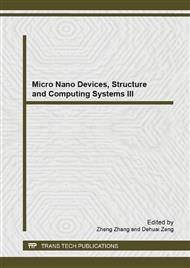p.149
p.154
p.160
p.165
p.171
p.177
p.183
p.191
p.195
MPPT Control Method Using Boost Type DC-DC Converter for PV Generation System with Mismatched Modules
Abstract:
Nowadays in a household PV generation system, it is generally connecting PV modules in series and then output to the power-conditioner. However, when PV modules are mismatched, it will lead to a wrong maximum power point tracking (MPPT) to all modules and a power decreasing of the whole system. Aiming at this problem, this paper presents the idea which improves the MPPT without changing the conventional power-conditioner, by adding a boost type DC-DC converter behind each module. Simulations of PSIM and experiments are taken to prove this theory. The result shows that, by this idea, the generated power of the conventional PV generation system can be greatly increased under the condition of mismatch.
Info:
Periodical:
Pages:
171-176
Citation:
Online since:
April 2014
Authors:
Keywords:
Price:
Сopyright:
© 2014 Trans Tech Publications Ltd. All Rights Reserved
Share:
Citation:


